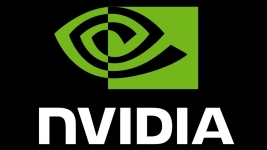You talk about technologies and solutions. With AI startups, the difference between the two is often blurry, meaning a lot of hype and buzz but poor customer satisfaction. Are you one of them?
You’re right, turning research into production-ready products or services on real-life customer data is no small task. But no, we’re not one of them like you say. We have done the job and we’ll continue to do it based on a constantly refined integration cycle, which you could say is an in-house method in its own rights.
From the customer perspective, LEXISTEMS’s technologies are available as APIs, which makes them completely customizable solutions. These APIs – among which X-Act.ai, SensibleSearch.ai and SensibleChat.ai – give web, mobile, IoT, VR/AR and kiosk applications instant operational intelligence, business expertise, natural language ease of use and advanced conversational skills.
Do you have examples of applications based on your APIs?
Our solutions are designed to instantly turn data or documents assets into competitive advantages and profitable applications. So the array of user cases based on our technologies is wide.
Customer projects is a sensitive topic but, to name a few, there is a one at a global banking/insurance company to provide the company’s customers with a 24/7 agent capable of answering complex legal questions in natural language, with the heavy constraint that answers must be legally correct and accurate. This one is a synthesis of difficulties in NLP and meaning-based knowledge matching.
In another one, we do data aggregation and automatic information/insights extraction on heterogeneous unstructured knowledge bases, some private, some public.
In yet another one, LEXISTEMS’s technologies are used to enable set-top boxes owners to find programs by wishes or descriptions, and to answer questions on the topic of the program currently playing. Say for instance you’re watching a documentary on President Kennedy. You can ask when he was born, what was his education, his political career – this kind of things, simple or not. You can do it by speech or text (remotes have mikes and keypads), and the answers are returned either in speech or on screen. This one is really cool. We hope is goes to market pretty soon.
I’ll stop the listing here because I don’t want to jeopardize ongoing deals. But let me add that we also have a few web and mobile demos on public data that show what can be done with our technologies in knowledge querying, connecting and processing, either directly or in more conversational ways.
Let’s be technical. What AI technologies do you currently use – or plan to use in the next future?
What, trade secrets gain? (smiles…) No, seriously, we are currently using and/or testing specific types of RNNs, LSTMs, differential neural networks (editor’s note: a recent derivative of neural Turing machines)… depending on the problem to solve, the nature of the data and the moment in our results production pipeline.
We are fortunate to have researchers / specialists in these very active areas, some of whom are ex-interns at major AI players or labs, so we can experiment at reasonable cost. Add to that a spirit of constant – sometimes even manly! – intellectual challenges among the guys plus partnerships with prominent GPU providers and you have a picture of what it’s like at LEXISTEMS AI-wise.
Now, a LEXISTEMS specificity is that these concrete problem-solving approaches are always coupled with NLU technologies because our focus is data meaning – that’s what we do. The whole makes up our proprietary AI technologies toolbox, whose components can be mixed in kind of a Lego fashion. You know, ultimately, it’s the customer use case that decides what the solution to deliver will be comprised of.
One last technical question. We’re talking about data, especially business data. Data security must be a priority for your customers. How do you take care of that?
In a very simple and I believe very reassuring way. Customers data won’t leave customers datastores. We just need to read data once to allow meaning-based processing, including when business data must be connected to public / open data. For the record, we also have developed agents that automatically integrate data updates right from the datastores, with a read operation that only needs be performed once.
What we do is vectorize the information, which transforms it into a special digital representation. In themselves, these vectors are very difficult to hack. And because our customers’ data or knowledge bases are generally very important in size, the probability of successful, actionable hacking on a large volume of vectors is extremely low.
To be complete, from an infrastructure standpoint, we are HTTP2 from end to end, our APIs and applications are very securely containerized and we can have several flavors of real time activity monitoring available upon customer demand.
More around this topic...
© HPC Today 2024 - All rights reserved.
Thank you for reading HPC Today.































